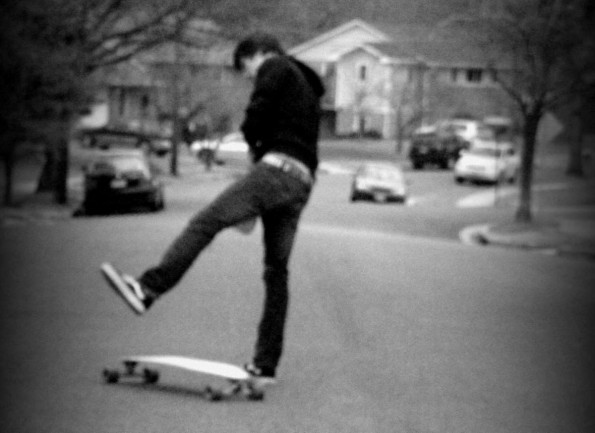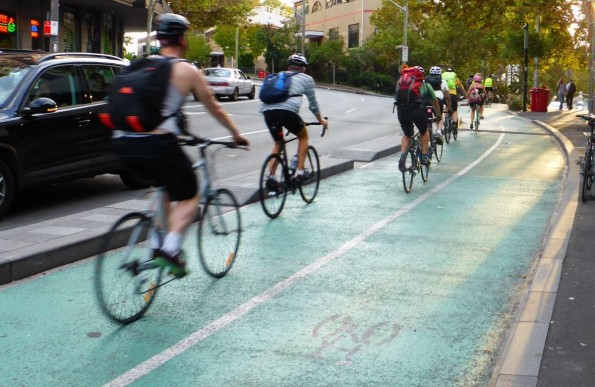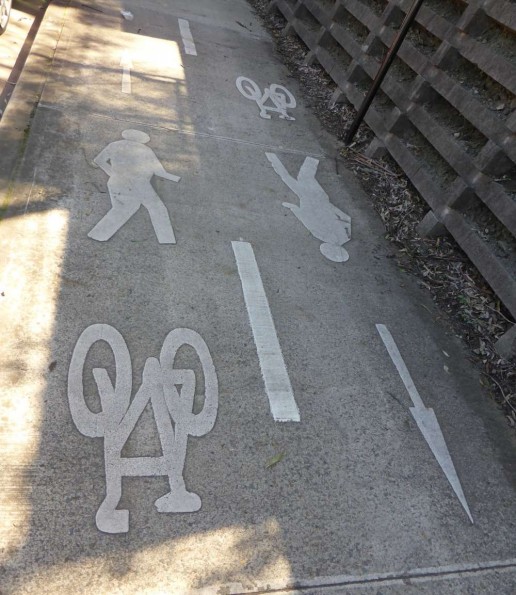
Riders of skateboards, rollerblades and foot-powered scooters are treated as pedestrians. The definition of a pedestrian includes “a person in or on a wheeled recreational device or wheeled toy.” It also includes unicycles, snake boards, pedal go-karts, tricycles (including drift trikes) and other non-powered wheeled toys.
Powered scooters and skateboards (including electronically self-balancing vehicles like Segways) cannot be registered and must only be used on private land.
Riders are given the lowest priority of any road user. They can ride on footpaths unless otherwise prohibited by signs, but must keep to the left and give way to other pedestrians.
Where there is a separate bike and pedestrian path, riders must use the section designated for bicycles but must keep out of the way of bicycles.

In the case of the pavement below, pedestrians and riders share the same lanes, but riders must give way to pedestrians.

Riders must not threaten pedestrians and must slow down or dismount in busy areas. While there is no legal requirement to wear a helmet or safety pads it is strongly recommended. It’s not recommended that school-aged children are allowed to ride on the road as they are less aware of the general road rules and less able to judge traffic speeds and distances, particularly when young.
Use on roads
Foot scooters, skateboards and rollerblades can be used on some roads, but only during daylight hours. The restrictions are that they are not allowed to be used on:
- Roads with a dividing line
- Roads with a median strip
- One-way roads with more than one lane
- Any road with a speed limit of more than 50kph
If you are driving and see a person on a skateboard or scooter on the road, give them enough room when you overtake. Both types of vehicles are inherently less stable than a car. The riders may need to swerve to avoid potholes, gratings and other road hazards.
